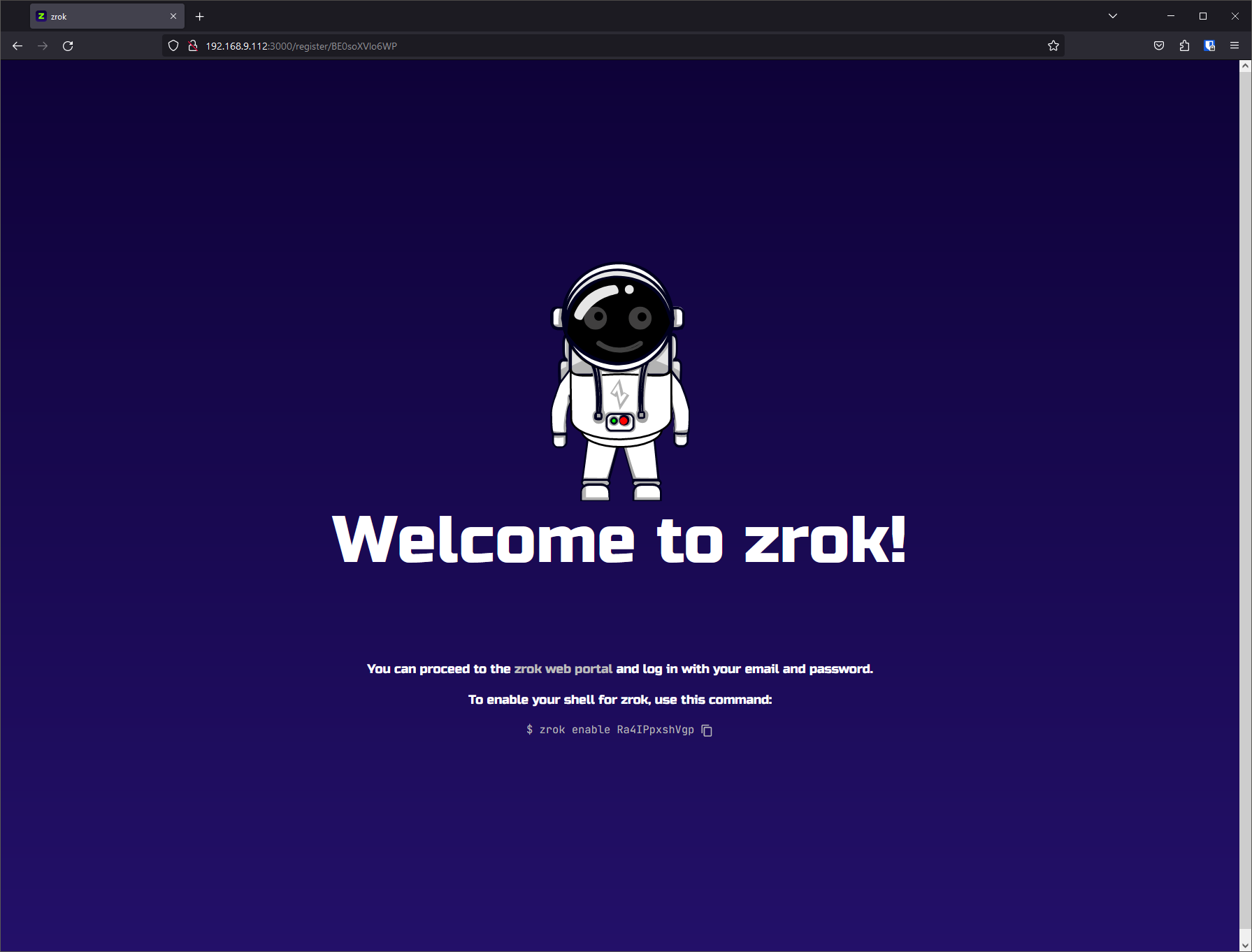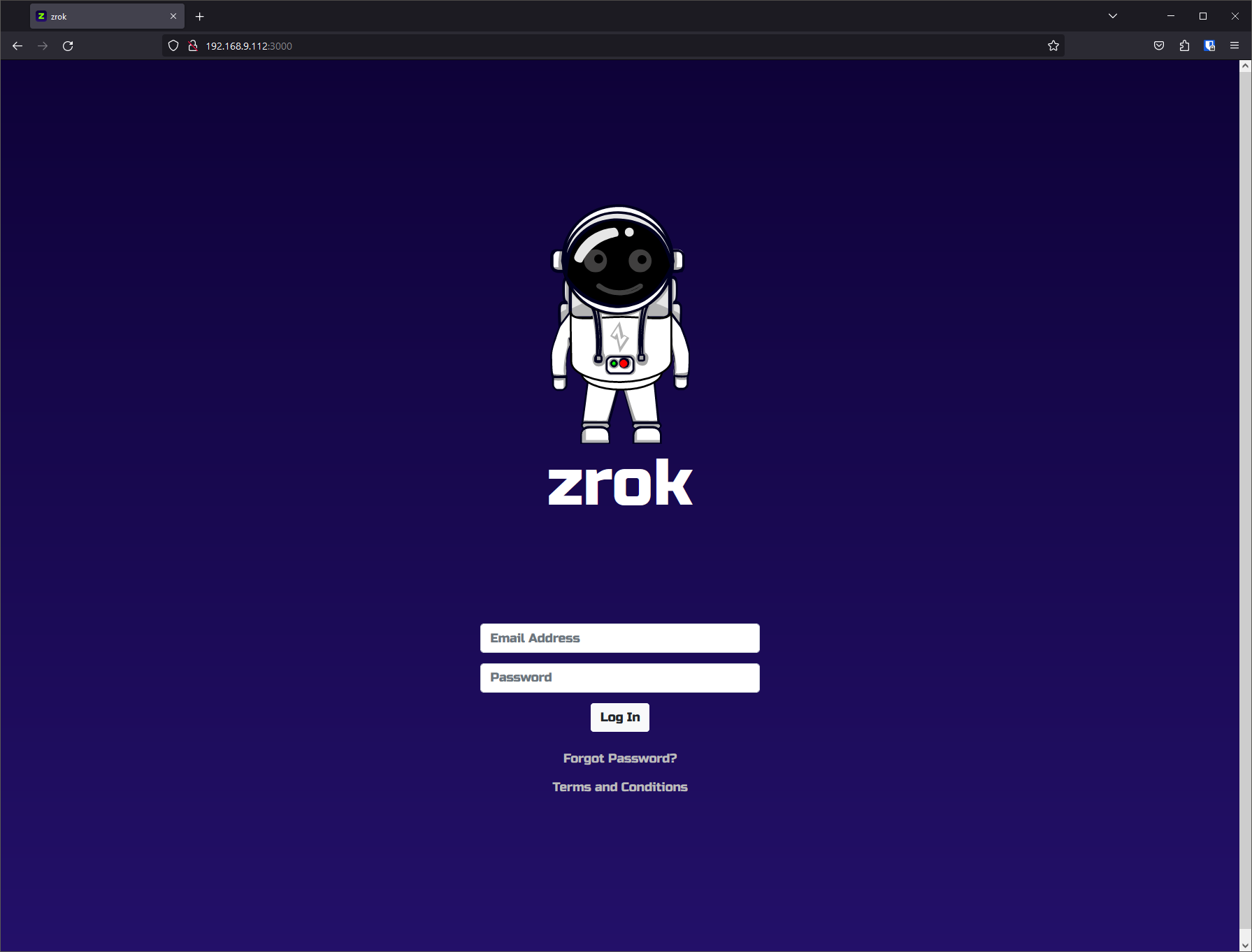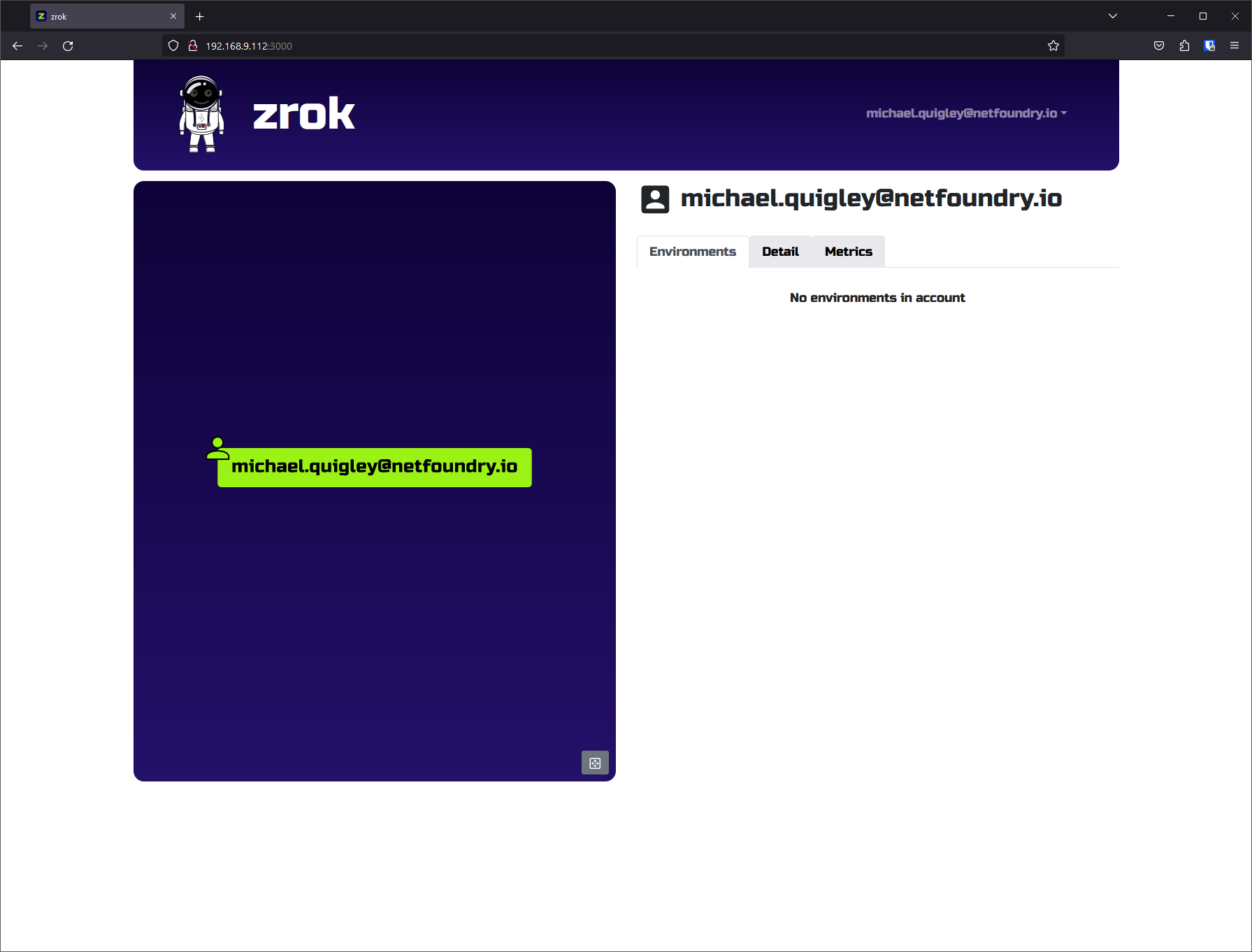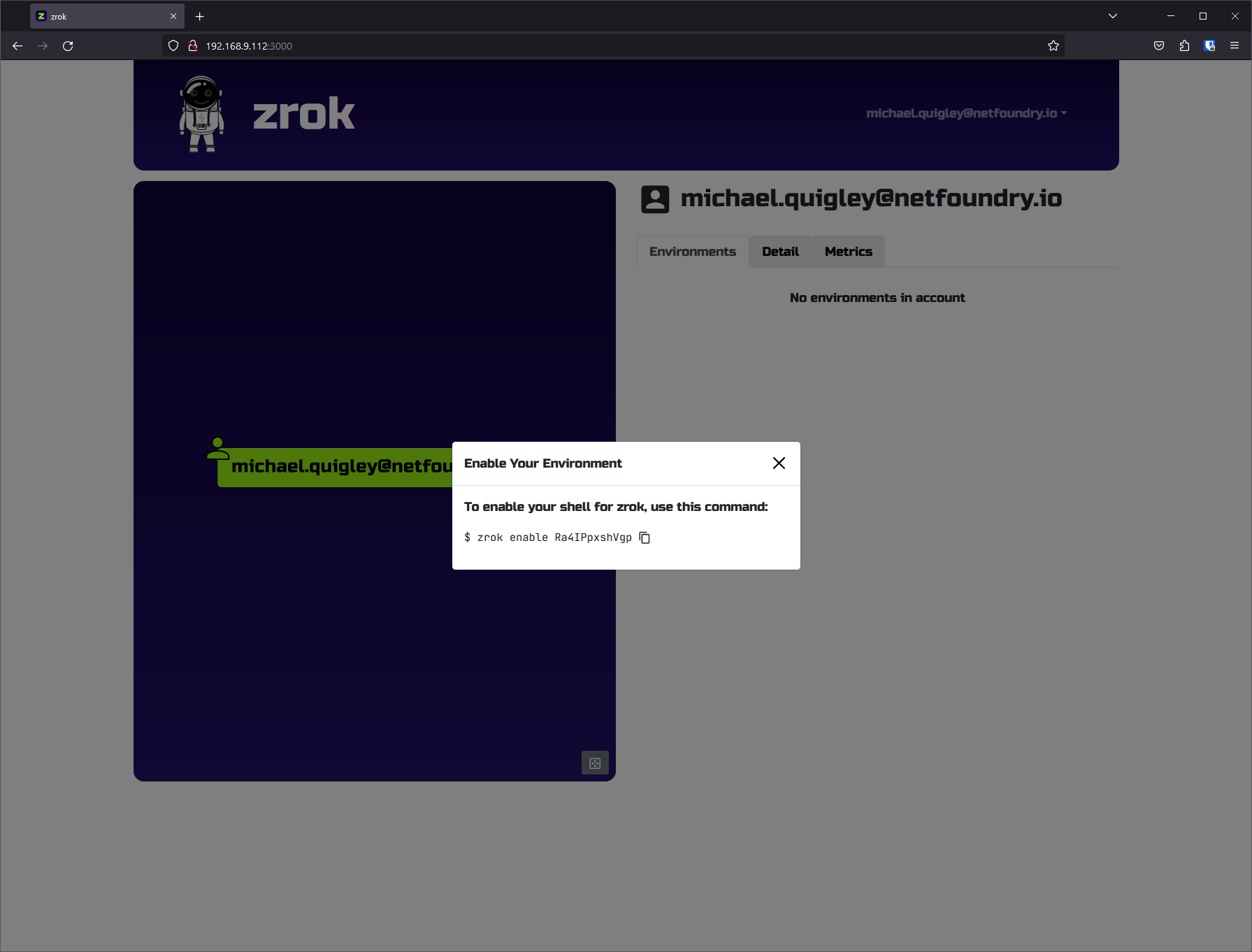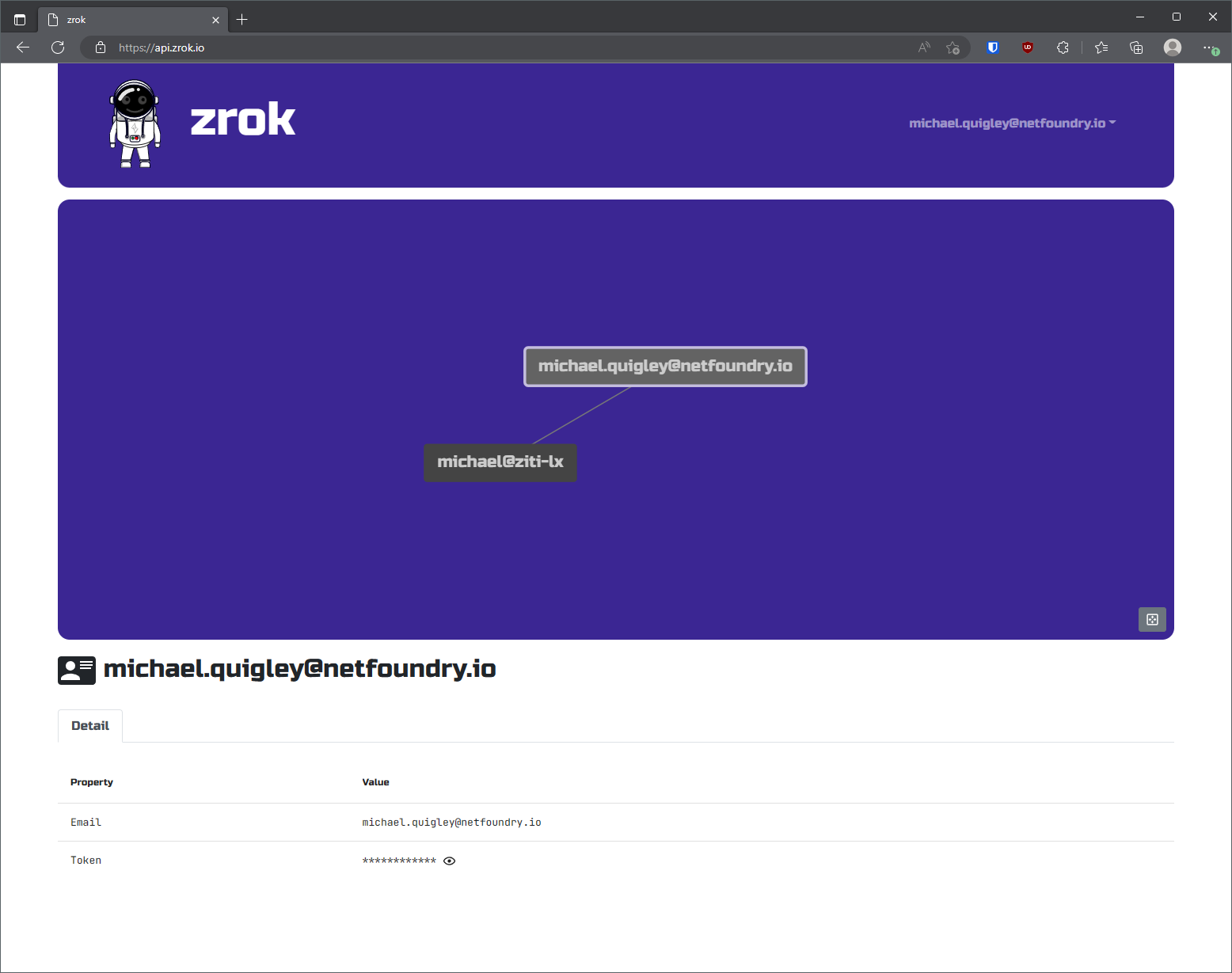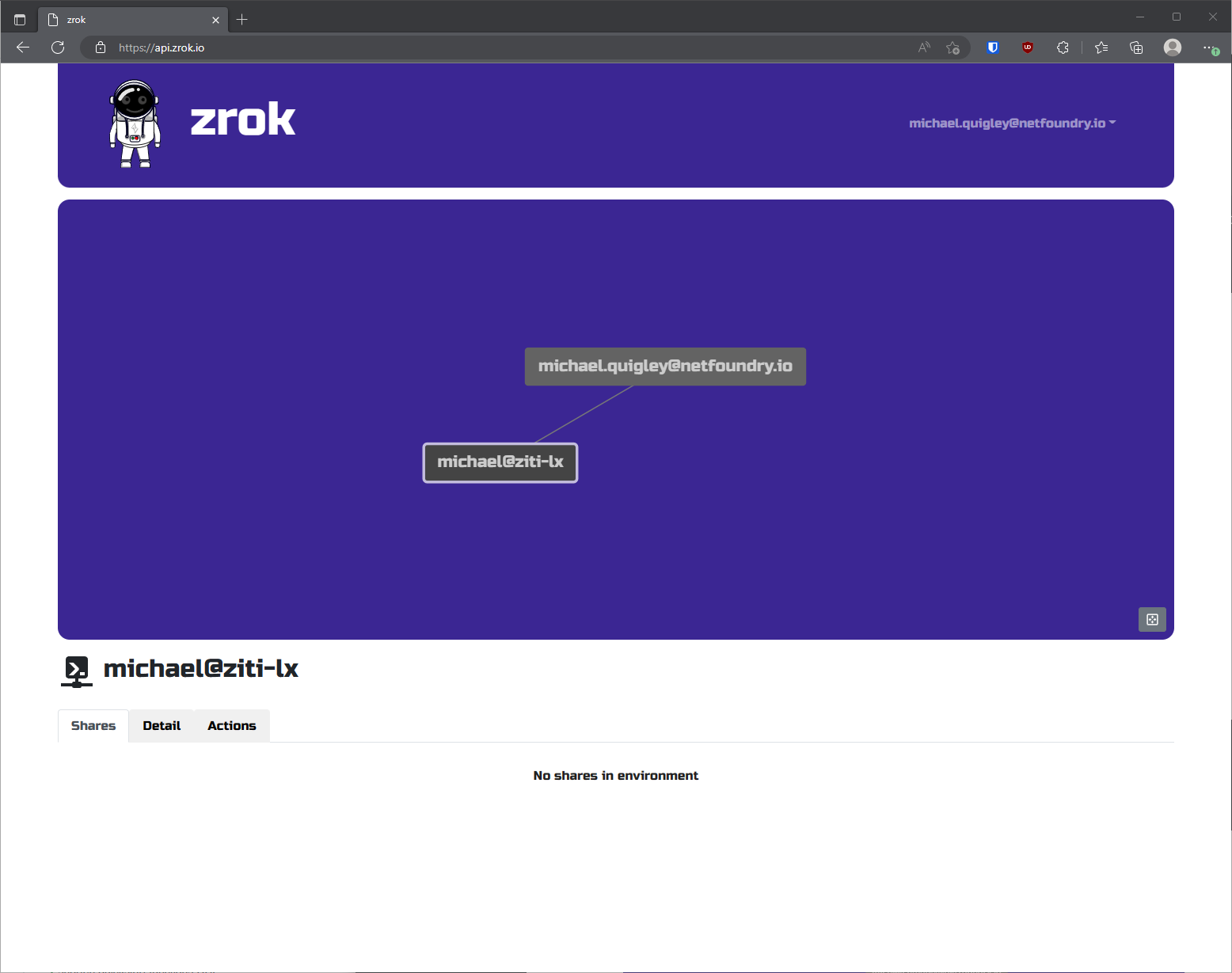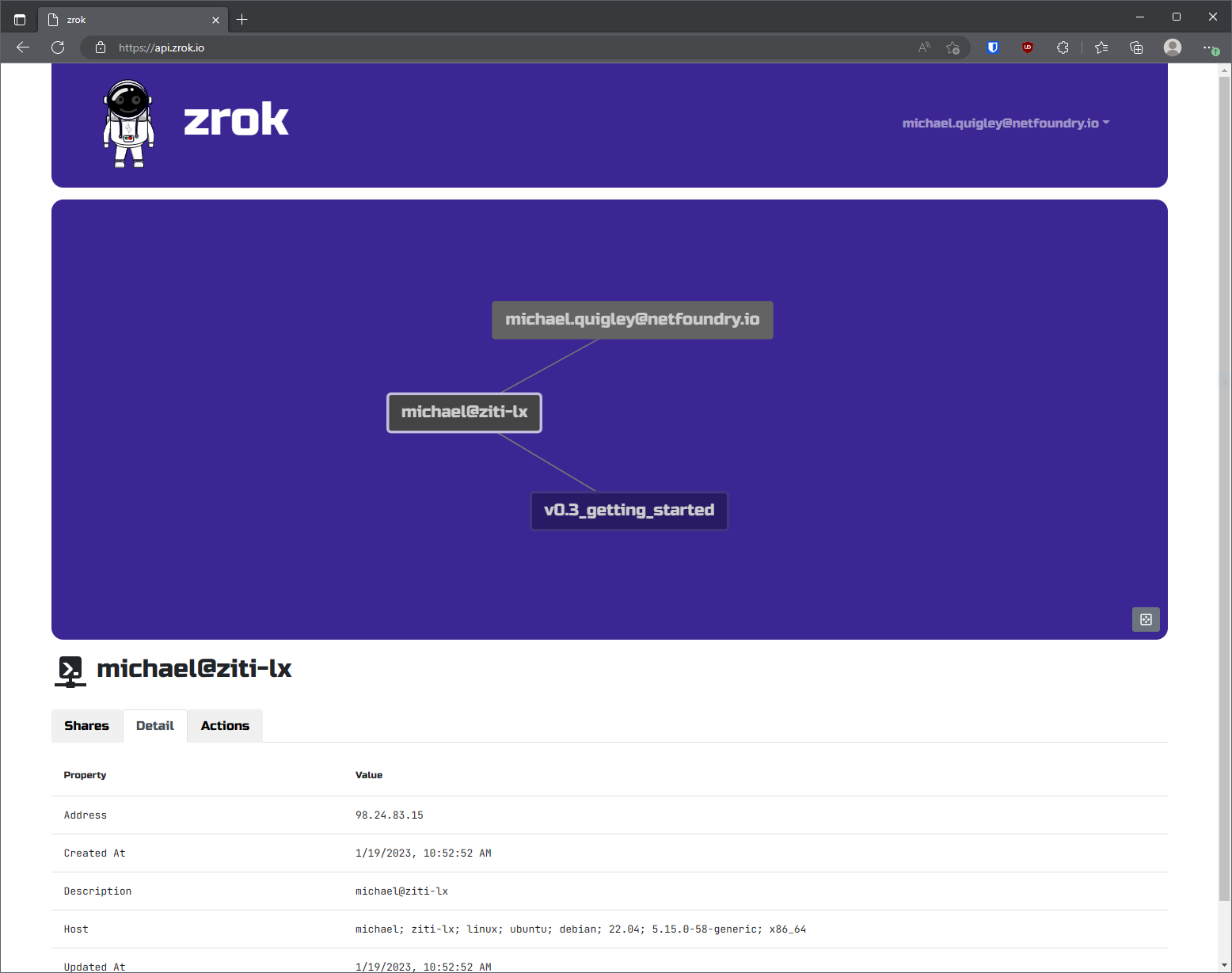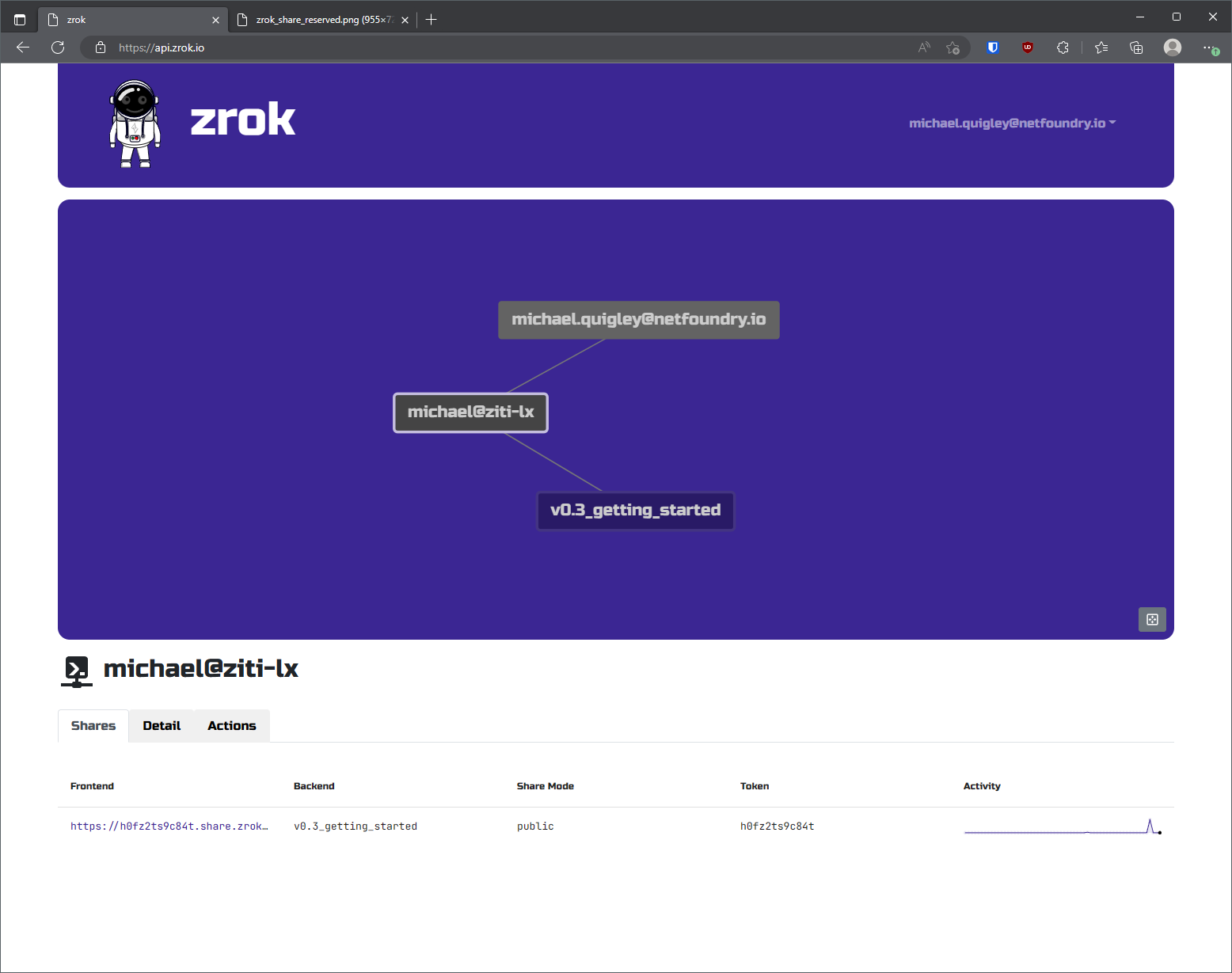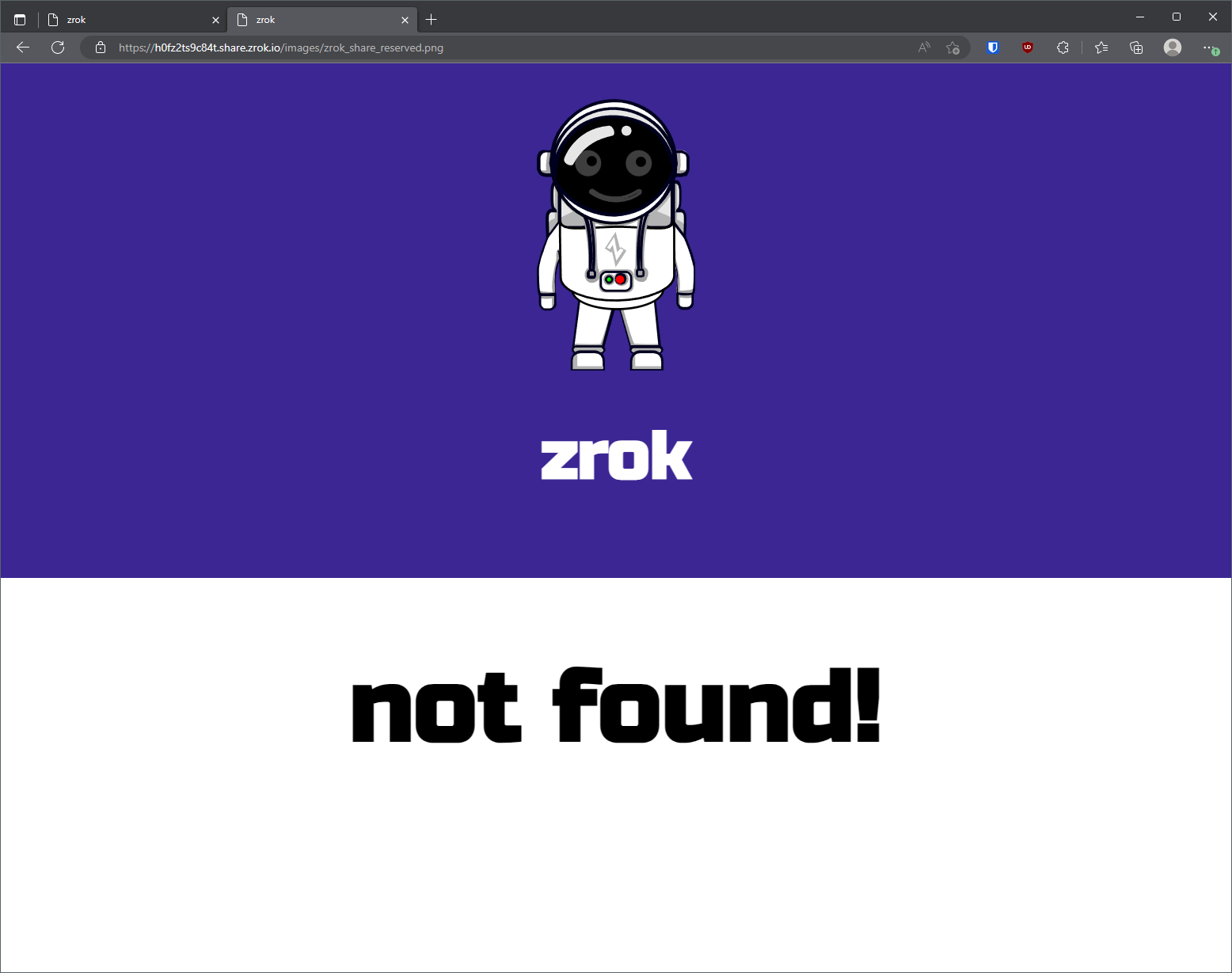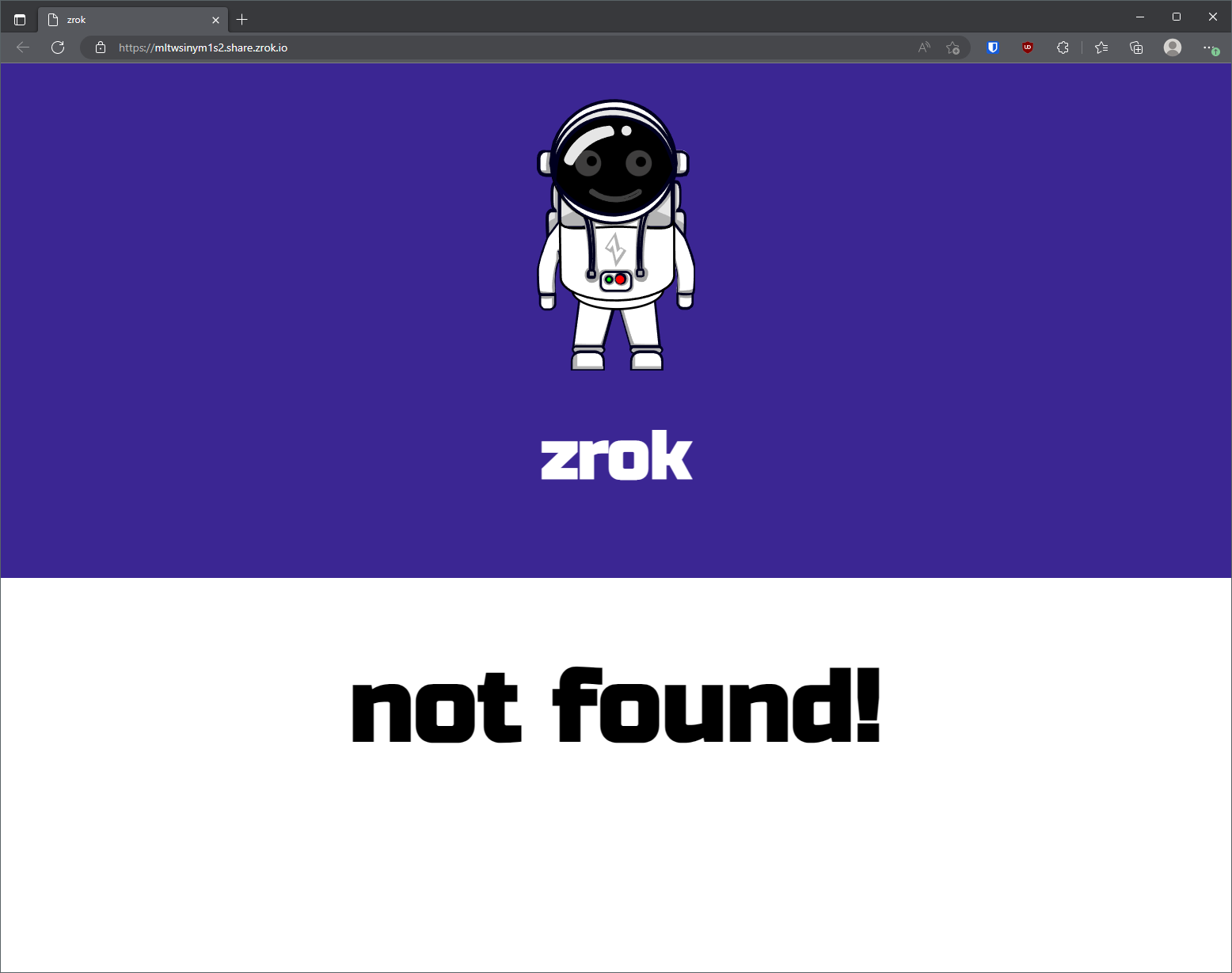20 KiB
| sidebar_position |
|---|
| 0 |
Getting Started with zrok
zrok is a next-generation sharing platform, designed to make sharing network and file resources simple and secure. zrok is a Ziti Native Application, built on top of the OpenZiti programmable zero trust network overlay. zrok is open source, licensed under the Apache v2 license. You can choose to self-host zrok or leverage the free, managed offering provided by NetFoundry at https://zrok.io.
As of version v0.4.0, zrok provides the ability to:
- share resources publicly, similar to other distributed reverse proxies; this allows you to easily expose your private HTTP/S resources to the public internet without changing your network security
- share resources privately; private sharing uses peer-to-peer connectivity between two parties by leveraging the OpenZiti overlay. We believe the private sharing offered by
zrokprovides a unique level of security and privacy for this type of sharing.
As of version v0.4.0, zrok allows sharing these kinds of resources:
- HTTP/S resources;
zrokprovides reverse proxy capabilities for your HTTP/S endpoints, both publicly and privately - file resources;
zrokprovides built inwebcapabilities, allowing you to share your files with other users, both publicly and privately - TCP and UDP tunnels;
zrokprovides built-intunnelcapabilities, allowing you to share your TCP and UDP endpoints directly with other users privately (zrokdoes not currently offer public sharing of these kinds of resources)
Let's take a look at how to get started with zrok.
:::note zrok moves fast!
zrok is currently in a closed-beta phase and requires an invitation token. If you would like to try zrok and provide
feedback, please send an email to invite@zrok.io. zrok is an open source project and is in its early development
phases. We're doing our development publicly. See the roadmap for details
about the project. We are highly interested in feedback as we continue to iterate quickly. Please provide feedback in
Discourse, raise GitHub Issues, or reach
out directly.
:::
Downloading zrok
Releases are also available from the zrok project repository on GitHub at https://github.com/openziti/zrok/releases/latest. If you're a Linux user and you're not sure which download to use then check out the hints on the Downloads page.
Extract zrok Distribution
Move the downloaded zrok distribution into a directory on your system. In my case, I've placed it in my home directory:
$ ls -lF zrok*
-rwxr-xr-x 1 michael michael 14459159 May 31 13:46 zrok_0.4.0-rc1_linux_amd64.tar.gz*
Create a directory where the extracted distribution will sit:
$ mkdir zrok
$ cd zrok/
Extract the zrok distribution:
$ tar zxvf ../zrok_0.4.0-rc1_linux_amd64.tar.gz
CHANGELOG.md
README.md
zrok
NOTE: On Windows platforms the distribution is shipped as a
ziparchive. Windows Explorer includes support for extractingziparchives natively.
Add zrok to your shell's environment.
For Linux or macos:
$ export PATH=`pwd`:$PATH
For Windows (using Command Prompt):
> set PATH=%CD%;%PATH%
For Windows (using PowerShell):
$env:path += ";"+$pwd.Path
With the zrok executable in your path, you can then execute the zrok command from your shell:
$ ./zrok version
_
_____ __ ___ | | __
|_ / '__/ _ \| |/ /
/ /| | | (_) | <
/___|_| \___/|_|\_\
v0.4.0-rc1 [c889005]
Configure Your zrok Service Instance
:::note Most users can safely skip this section and proceed to "Generating an Invitation" below.
This section is relevant if you want to use the zrok CLI with an alternate service instance (in the case of self-hosting, etc.).
:::
zrok is both an installable utility that you interact with from your local computer, and also a service that exists on the network. NetFoundry operates the public service instance that is available at api.zrok.io, but because zrok is open source and self-hostable, you're free to create your own zrok service instance.
The zrok executable defaults to using the zrok service instance at api.zrok.io. Should you need to change the endpoint to use a different service instance, you can do that with the following command:
$ zrok config set apiEndpoint https://zrok.mydomain.com
[WARNING]: unable to open zrokdir metadata; ignoring
zrok configuration updated
:::note
The WARNING about zrokdir metadata is ignorable. Running the zrok config set command writes a small piece of metadata into a .zrok folder inside your home directory. This allows zrok to identify the version of its settings, providing a mechanism to upgrade your installation as new versions are released. This WARNING is letting you know that your current environment has not been initialized by zrok.
:::
You can use the zrok status command to inspect the state of your local environment. zrok refers to each shell where you install and enable a copy of zrok as as an environment.
$ zrok status
Config:
CONFIG VALUE SOURCE
apiEndpoint https://zrok.mydomain.com config
[WARNING]: Unable to load your local environment!
To create a local environment use the zrok enable command.
:::note
The WARNING about being unable to load your local environment will go away once you've successfully enabled (zrok enable) for your shell (we'll get to that below). For now, this warning is ignorable.
:::
The zrok status command shows the configured API service that your environment is using, as well as the SOURCE where the setting was retrieved. In this case, config means that the setting was set into the environment using the zrok config command.
Generating an Invitation
In order to create an account with the zrok service instance, you will need to create an invitation.
:::note Some environments take advantage of invitation tokens, which limit who is able to request an invitation on the service instance. If your service uses invitation tokens, the administrator of your instance will include details about how to use your token to generate your invitation. :::
We generate an invitation with the zrok invite command. A service instance that allows open registration will provide an input form like this:
$ zrok invite
enter and confirm your email address...
> user@domain.com
> user@domain.com
[ Submit ]
invitation sent to 'user@domain.com'!
A service instance that requires token-based invitation authentication will present a form that looks like this:
$ zrok invite
enter and confirm your email address...
If you don't already have one, request an invite token at: michael@quigley.com
> Email Address
> Confirm Email
> Token
[ Submit ]
The zrok invite command presents a small form that allows you to enter (and then confirm) your email address. Tabbing to the [ Submit ] button will send the request to your configured zrok service.
Next, check the email where you sent the invite. You should receive a message asking you to click a link to create your zrok account. When you click that link, you will be brought to a web page that will allow you to set a password for your new account:
Enter a password and it's confirmation, and click the Register Account button. You'll see the following:
For now, we'll ignore the "enable your shell for zrok" section. Just click the zrok web portal link:
After clicking the Log In button, you'll be brought into the zrok web console:
Congratulations! Your zrok account is ready to go!
Enabling Your zrok Environment
When your zrok account was created, the service generated a secret token that identifies and authenticates in a single step. Protect your secret token as if it were a password, or an important account number; it's a secret, protect it.
When we left off you had downloaded, extracted, and configured your zrok environment. In order to use that environment with your account, you'll need to enable it. Enabling an environment generates a secure identity and the necessary underlying security policies with the OpenZiti network hosting the zrok service.
From the web console, click on your email address in the upper right corner of the header. That drop down menu contains an Enable Your Environment link. Click that link and a modal dialog will be shown like this:
This dialog box shows you the zrok enable command that you can use to enable any shell to work with your zrok account with a single command.
Let's copy that command and paste it into your shell:
$ zrok enable klFEoIi0QAg7
⣻ contacting the zrok service...
After a few seconds, the message will change and indicate that the enable operation suceeded:
$ zrok enable klFEoIi0QAg7
⣻ the zrok environment was successfully enabled...
Now, if we run a zrok status command, you will see the details of your environment:
$ zrok status
Config:
CONFIG VALUE SOURCE
apiEndpoint https://api.zrok.io env
Environment:
PROPERTY VALUE
Secret Token klFEoIi0QAg7
Ziti Identity FTpvelYD6h
Excellent... our environment is now fully enabled.
If we return to the web console, we'll now see the new environment reflected in the explorer view:
In my case, the environment is named michael@ziti-lx, which is the username of my shell and the hostname of the system the shell is running on.
:::note
Should you want to use a non-default name for your environment, you can pass the -d option to the zrok enable command. See zrok enable --help for details.
:::
If you click on the environment node in the explorer in the web console, the details panel shown at the bottom of the page will change:
The explorer supports clicking, dragging, mouse wheel zooming, and selecting the nodes in the graph for more information (and available actions) for the selected node. If you ever get lost in the explorer, click the  zoom to fit icon in the lower right corner of the explorer.
zoom to fit icon in the lower right corner of the explorer.
If we click on the Detail tab for our environment, we'll see something like:
:::note
With your zrok account you can zrok enable multiple environments. This will allow you to run zrok share in one environment, and zrok access in other environments.
:::
Your environment is fully ready to go. Now we can move on to the fun stuff...
Sharing
zrok is designed to make sharing resources as effortless as possible, while providing a high degree of security and control.
Ephemeral by Default
Shared resources are ephemeral by default; as soon as you terminate the zrok share command, the entire share is removed and is no longer available to any users. Identifiers for shared resources are randomly allocated when the share is created.
Public Shares and Frontends
Resources that are shared publicly are exposed to any users on the internet who have access to the zrok service instance's "frontend".
A frontend is an HTTPS listener exposed to the internet, that lets any user with your ephemeral share token access your publicly shared resources.
For example, I might create a public share using the zrok share public command, which results in my zrok service instance exposing the following URL to access my resources:
https://h0fz2ts9c84t.share.zrok.io
In this case my share was given the "share token" of h0fz2ts9c84t. That URL can be given to any user, allowing them to immediately access the shared resources directly from my local environment, all without exposing any access to my private, secure environment. The physical network location of my environment is not exposed to anonymous consumers of my resources.
:::note
Here is the --help output from zrok share public:
$ zrok share public
Error: accepts 1 arg(s), received 0
Usage:
zrok share public <target> [flags]
Flags:
--backend-mode string The backend mode {proxy, web} (default "proxy")
--basic-auth stringArray Basic authentication users (<username:password>,...)
--frontends stringArray Selected frontends to use for the share (default [public])
--headless Disable TUI and run headless
-h, --help help for public
--insecure Enable insecure TLS certificate validation for <target>
Global Flags:
-p, --panic Panic instead of showing pretty errors
-v, --verbose Enable verbose logging
[ERROR]: an error occurred (accepts 1 arg(s), received 0)
<target> defines the path to the local resource that you intend to share. The form of <target> depends on the --backend-mode that you're using.
In the case of --backend-mode proxy, <target> should be a URL to an HTTP endpoint.
In the case of --backend-mode web, <target> is the path to a file on disk that serves as the "root" of the file tree to be shared.
:::
If we return to the web console, we see our share in the explorer:
If we click on our new share in the explorer, we can see the share details:
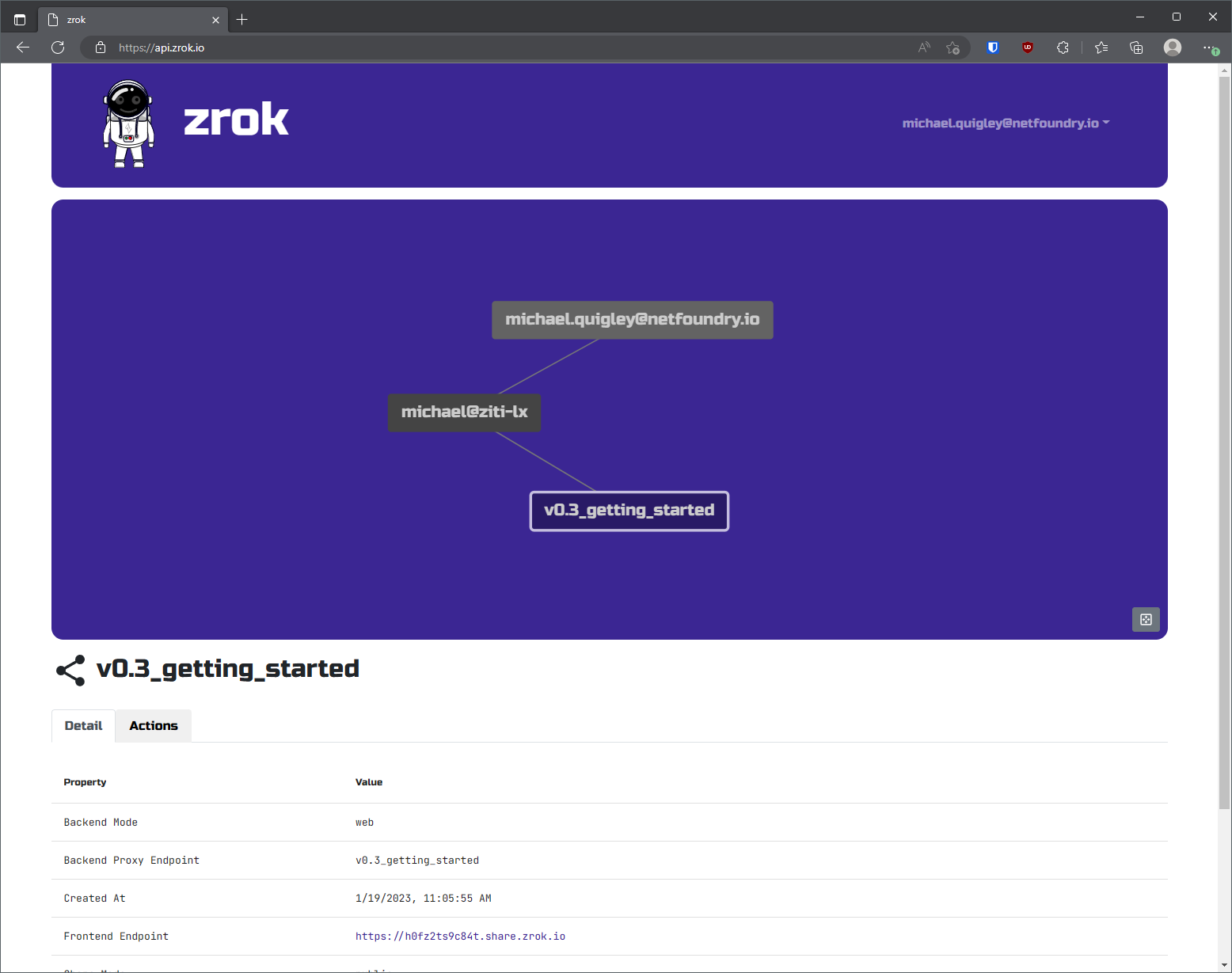
If we click on the frontend endpoint a new browser tab opens and we see the content of our share:

If we click on the environment in the explorer, we're shown all of the shares for that environment (including our new share), along with a spark line that shows the activity:
And as soon as I terminate the zrok share client, the resources are removed from the zrok environment.
If we try to reload the frontend endpoint in our web browser, we'll see:
Private Shares
zrok also provides a powerful private sharing model. If I execute the following command:
$ zrok share private http://localhost:8080
The zrok service will respond with the following:
access your share with: zrok access private wvszln4dyz9q
Rather than allowing access to your service through a public frontend, a private share is only exposed to the underlying OpenZiti network, and can only be accessed using the zrok access command.
The zrok access private wvszln4dyz9q command can be run by any zrok user, allowing them to create and bind a local HTTP listener, that allows for private access to your shared resources.
Proxy Backend Mode
Without specifying a backend mode, the zrok share command will assume that you're trying to share a proxy resource. A proxy resource is usually some private HTTP/HTTPS endpoint (like a development server, or a private application) running in your local environment. Usually such an endpoint would have no inbound connectivity except for however it is reachable from your local environment. It might be running on localhost, or only listening on a private LAN segment behind a firewall.
For these services a proxy share will allow those endpoints to be reached, either publicly or privately through the zrok service.
Web Backend Mode
The zrok share command accepts a --backend-mode option. Besides proxy, the current v0.3 release (as of this writing) also supports a web mode. The web mode allows you to specify a local folder on your filesystem, and instantly turns your zrok client into a web server, exposing your web content either publicly or privately without having to a configure a web server.
Reserved Shares
zrok shares are ephemeral unless you specifically create a "reserved" share.
A reserved share can be re-used multiple times; it will survive termination of the zrok share command, allowing for longer-lasting semi-permanent access to shared resources.
The first step is to create the reserved share:
$ zrok reserve public --backend-mode web v0.3_getting_started
[ 0.275] INFO main.(*reserveCommand).run: your reserved share token is 'mltwsinym1s2'
[ 0.275] INFO main.(*reserveCommand).run: reserved frontend endpoint: https://mltwsinym1s2.share.zrok.io
I'm asking the zrok service to reserve a share with a web backend mode, pointing at my local docs folder.
You'll want to remember the share token (mltwsinym1s2 in this case), and the frontend endpoint URL. If this were a private reserved share, there would not be a frontend URL.
If we do nothing else, and then point a web browser at the frontend endpoint, we get:
This is the 404 error message returned by the zrok frontend. We're getting this because we haven't yet started up a zrok share for the service. Let's do that:
This command:
$ zrok share reserved mltwsinym1s2
...results in a new share backend starting up and connecting to the existing reserved share:
And now if we refresh the frontend endpoint URL in the web browser, we'll see an index of the docs directory:
With the reserved share, we're free to stop and restart the zrok share reserved command as many times as we want, without losing the token for our share.
When we're done with the reserved share, we can release it using this command:
$ zrok release mltwsinym1s2
[ 0.230] INFO main.(*releaseCommand).run: reserved share 'mltwsinym1s2' released
Concepts Review
In summary, zrok lets you easily and securely share resources with both general internet users (through public sharing) and also with other zrok users (through private sharing).
Here's a quick review of the zrok mental model and the vocabulary.
Service Instance and Account
You create an account with a zrok service instance. Your account is identified by a username and a password, which you use to log into the web console. Your account also has a secret token, which you will use to authenticate from the zrok command-line to interact with the service instance.
You create a new account with a zrok service instance through the zrok invite command.
Environment
Using your secret token you use the zrok command-line interface to create an environment. An environment corresponds to a single command-line user on a specific host system.
You create a new environment by using the zrok enable command.
Shares
Once you've enabled an environment, you then create one or more shares. Shares have either a public or private sharing mode. Shares share a specific type of resource using a backend mode. As of this writing zrok supports a proxy backend mode to share local HTTP resources as a reverse proxy. zrok also supports a web backend mode to share local file and HTML resources by enabling a basic HTTP server.
Every share is identified by a share token. Public shares can be accessed through either a frontend instance offered through the zrok service instance, or through the zrok access command. Private shares can only be accessed through the zrok access command.
You use the zrok share command to create and enable ephemeral shares.
Reserved Shares
zrok supports creating shares that have a consistent share token that survives restarts of the zrok share command. These are considered non-ephemeral, and is callled a reserved share.
You use the zrok reserve command to create reserved shares. Reserved shares last until you use the zrok release command to delete them.
Self-Hosting a Service Instance
Interested in self-hosting your own zrok service instance? See the self-hosting guide for details.

